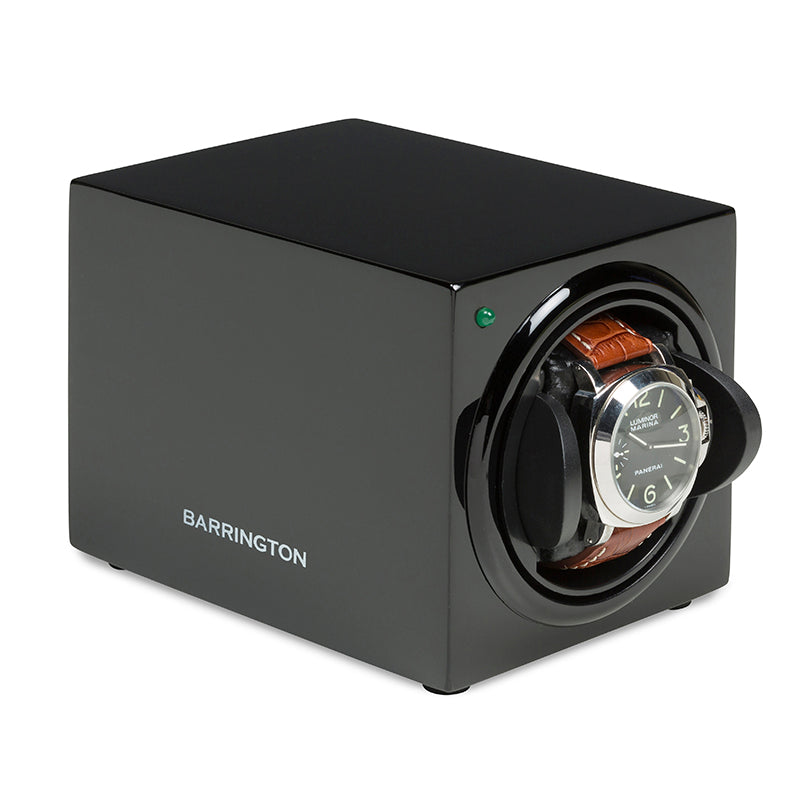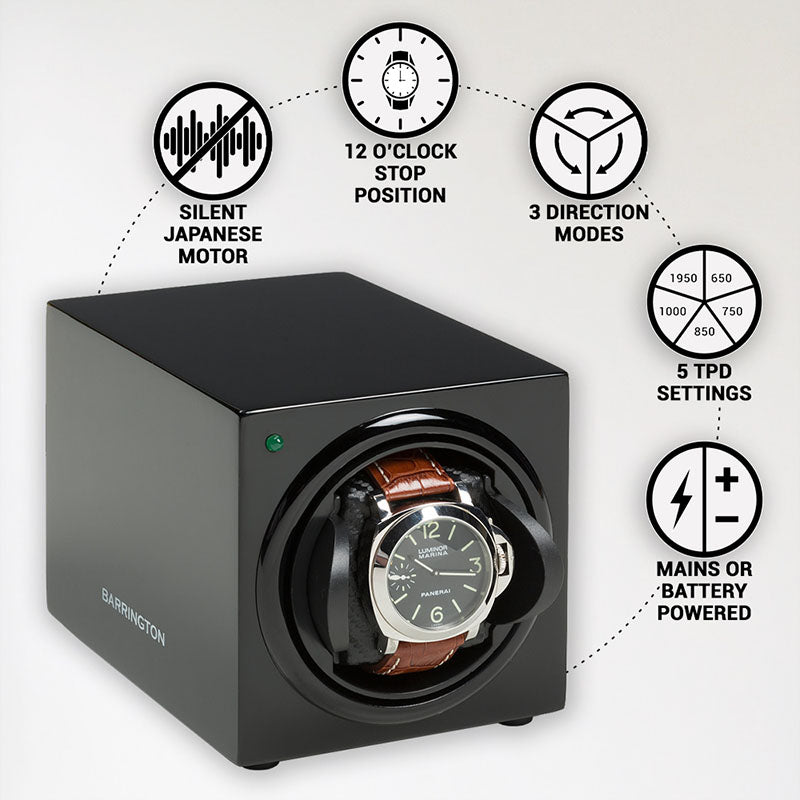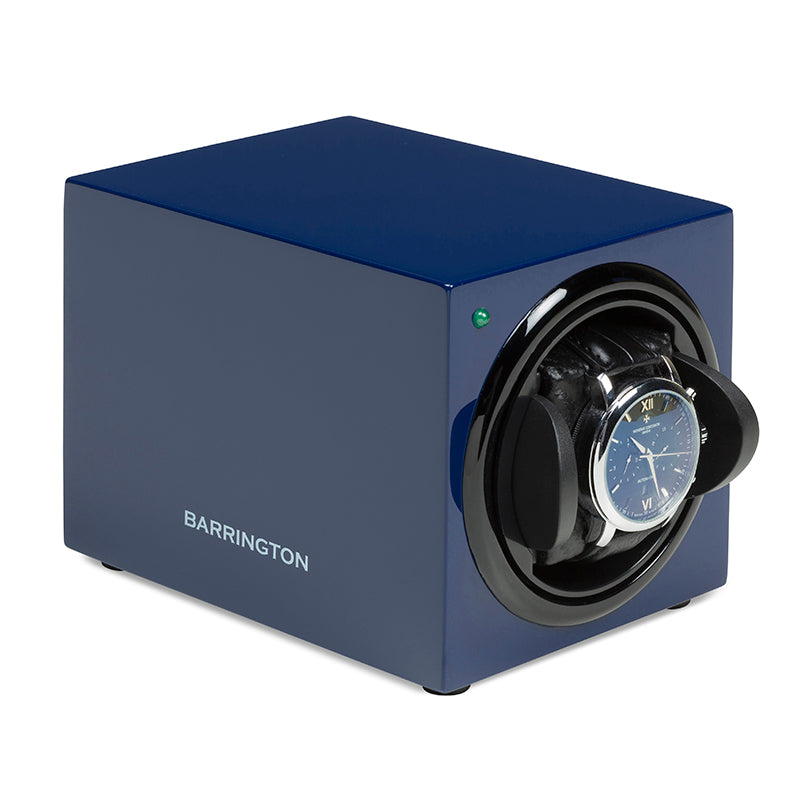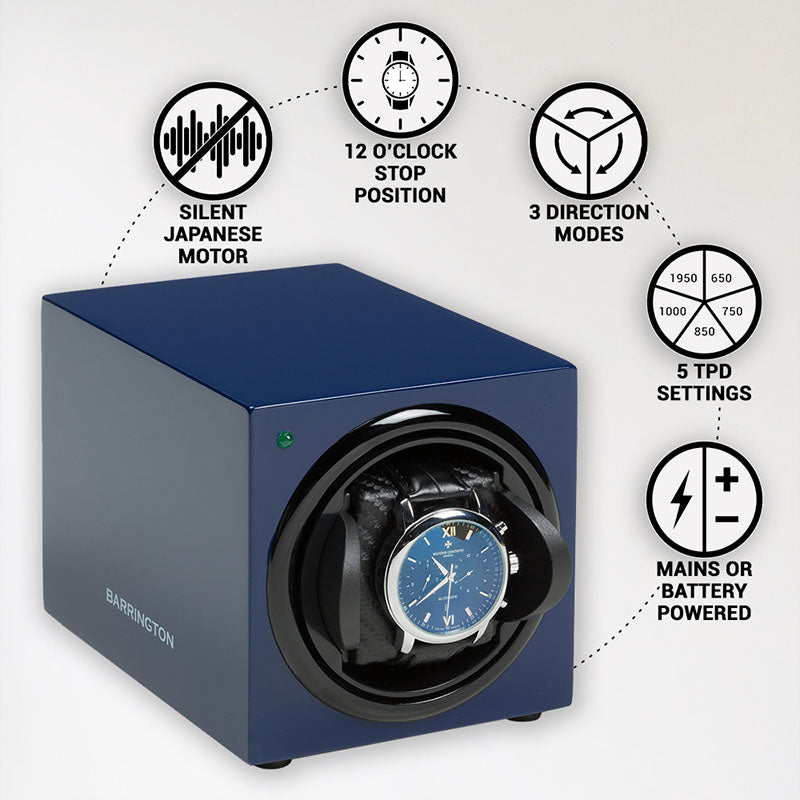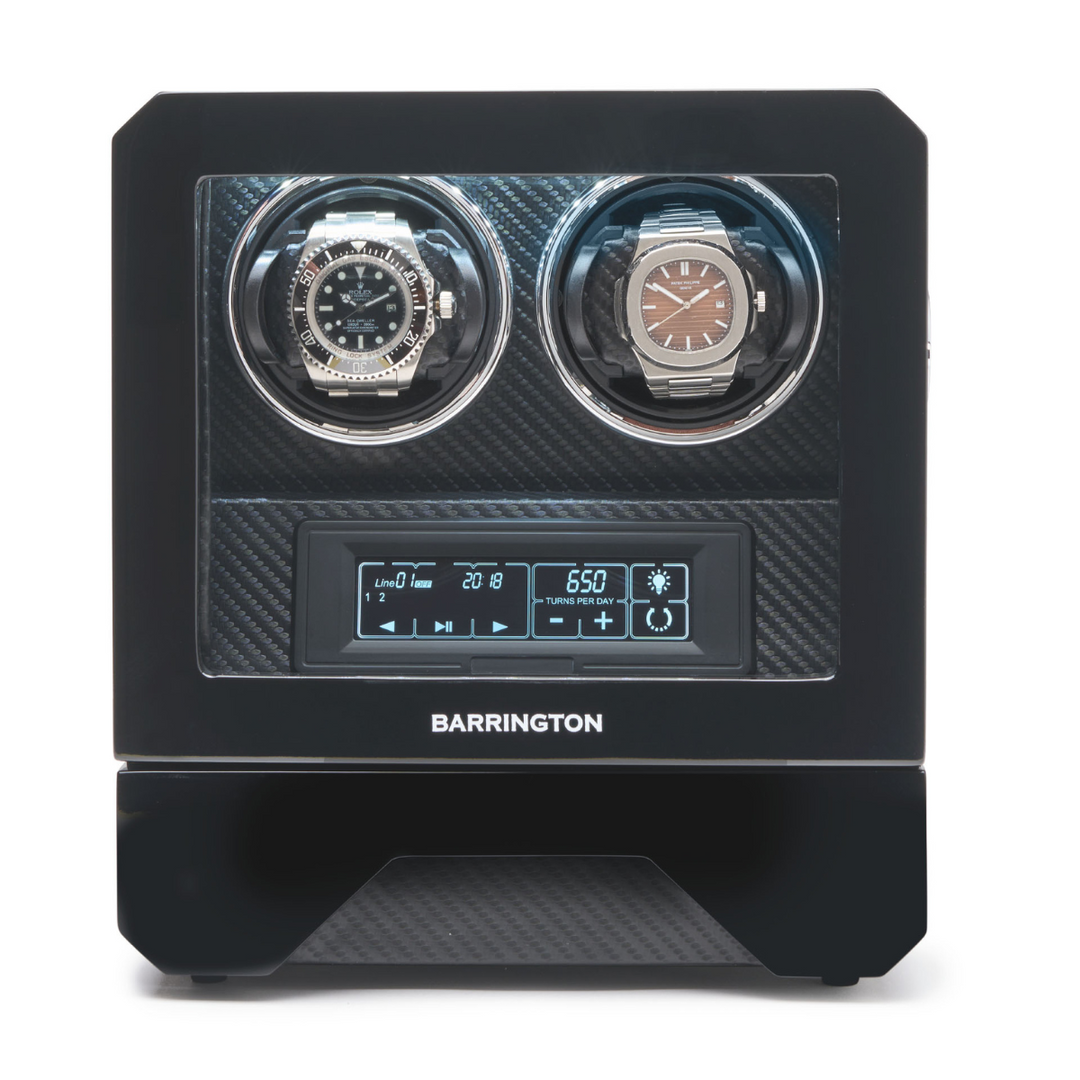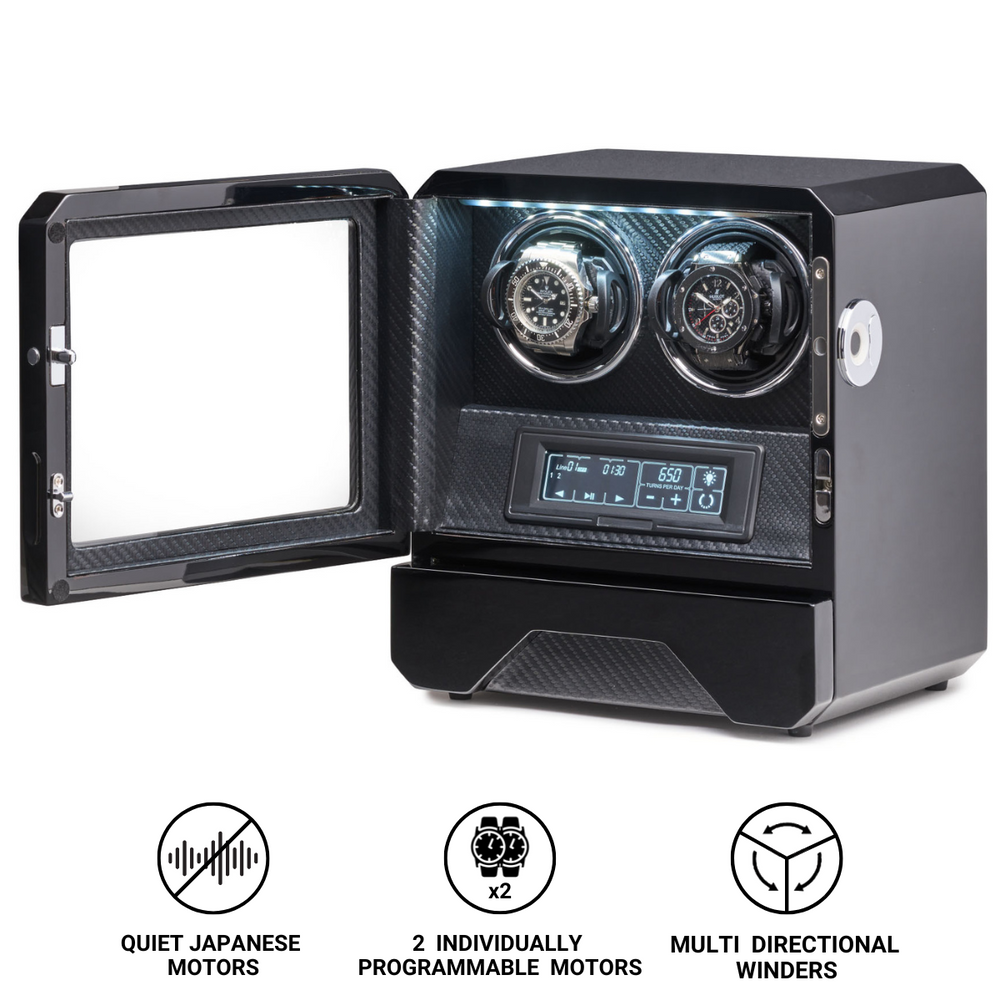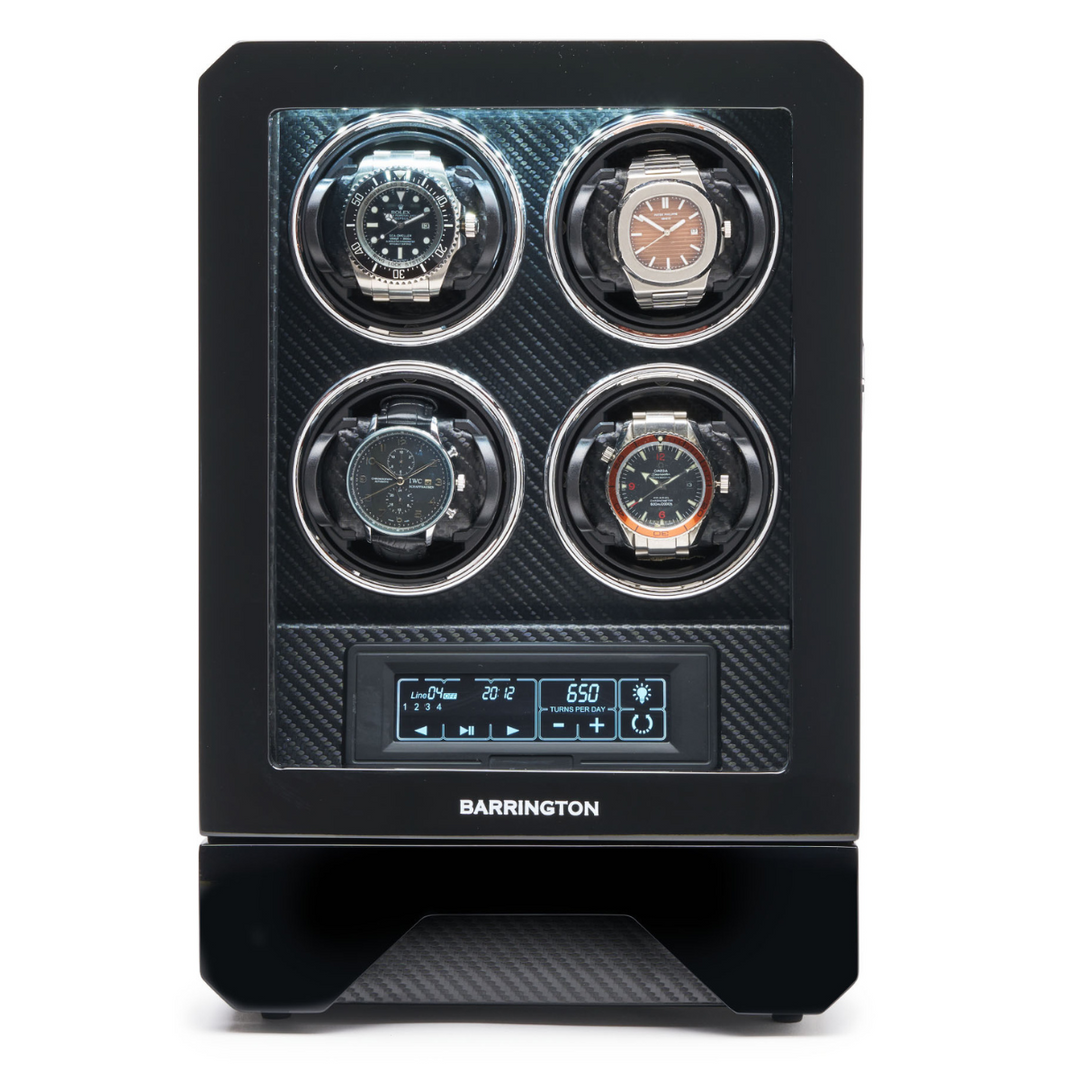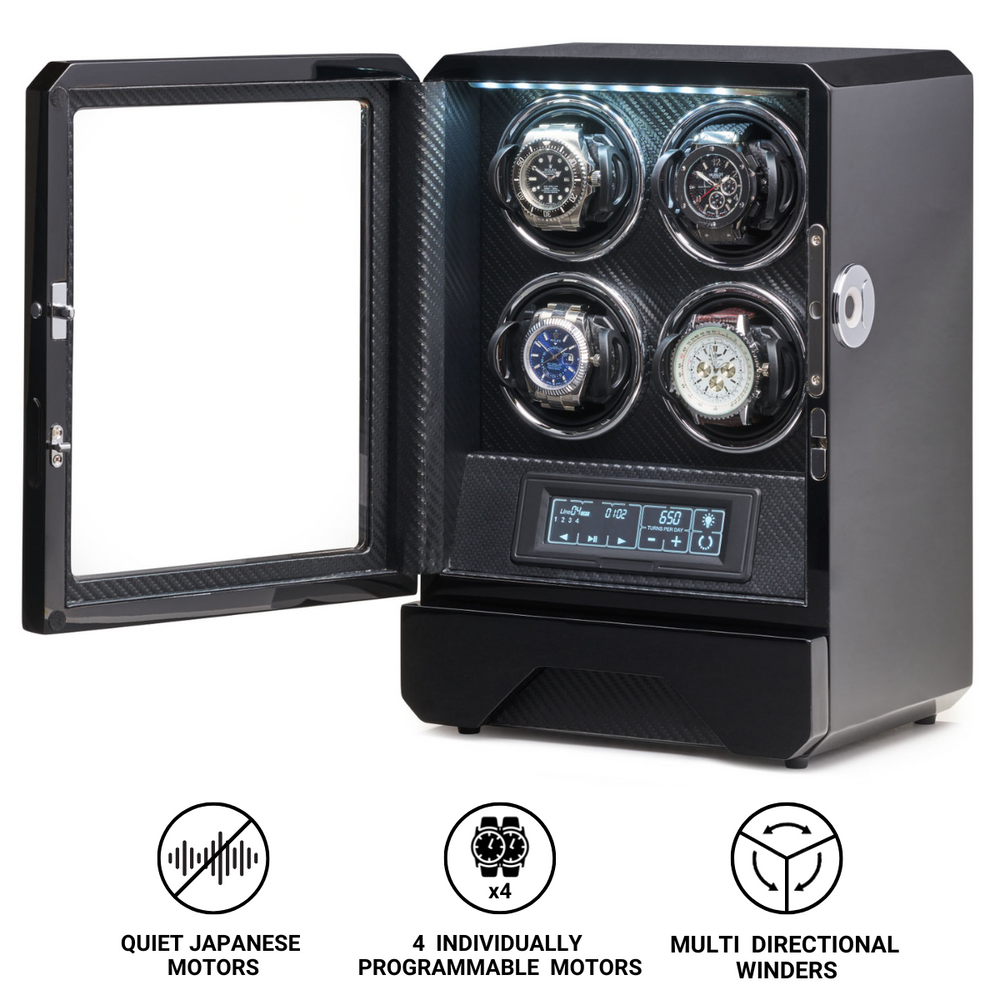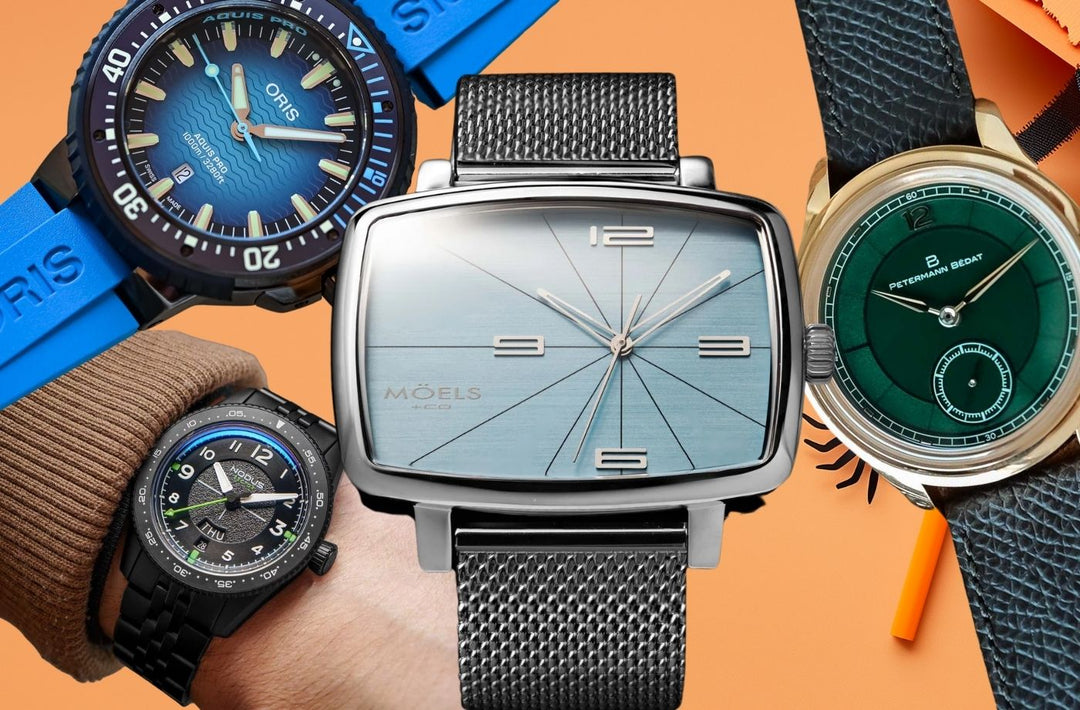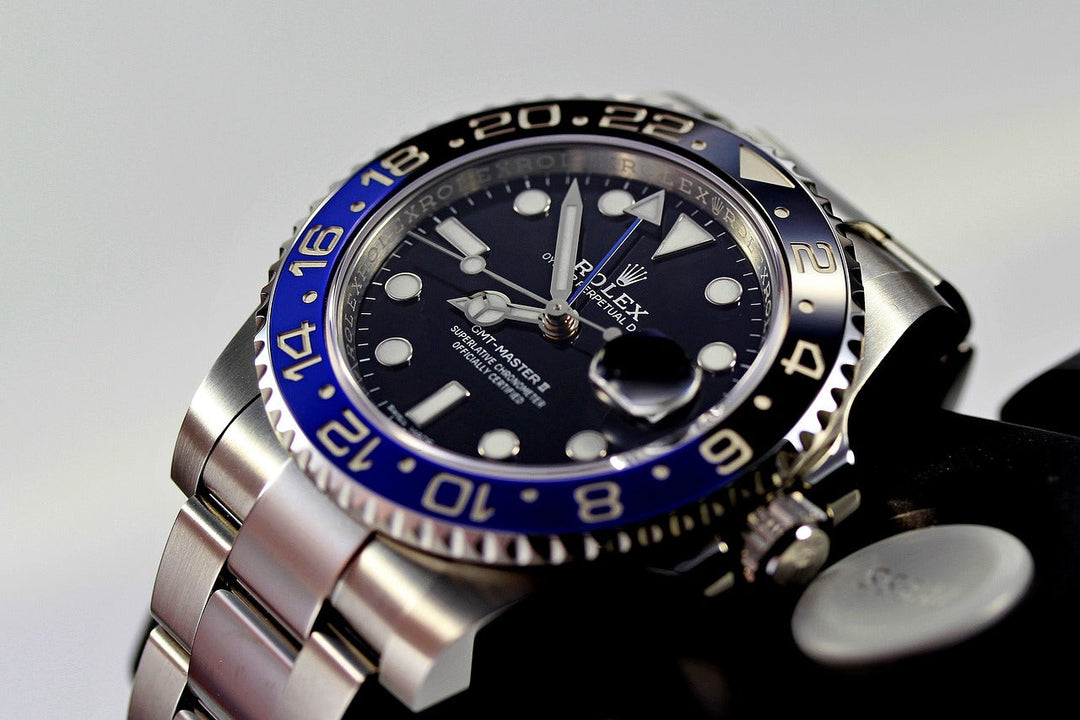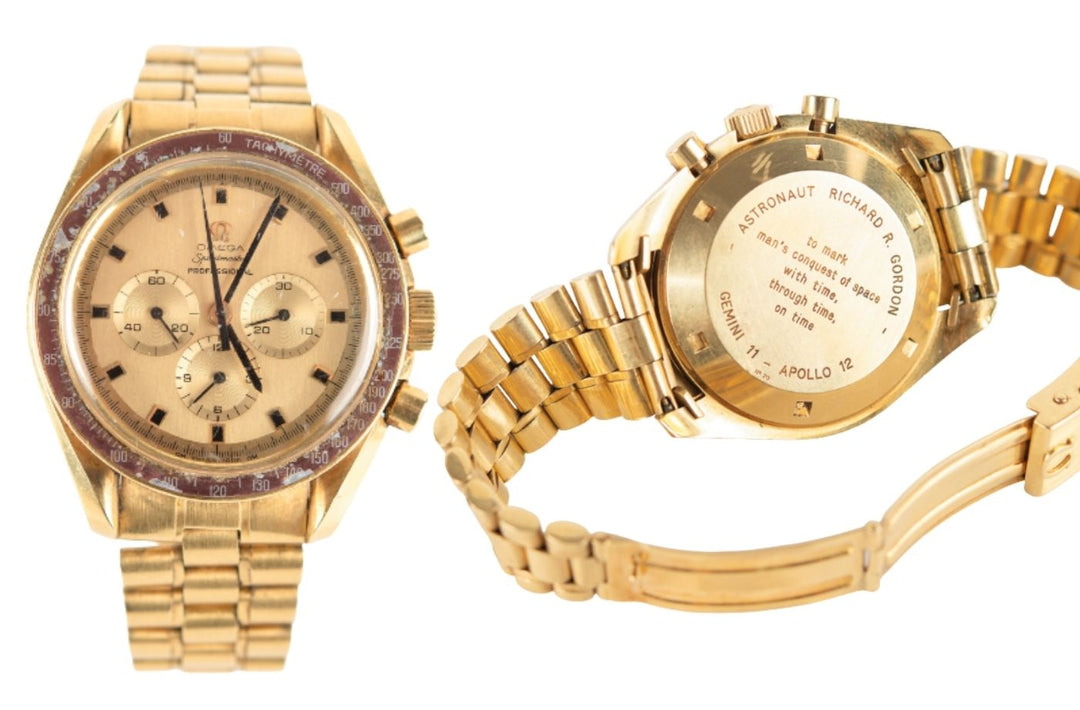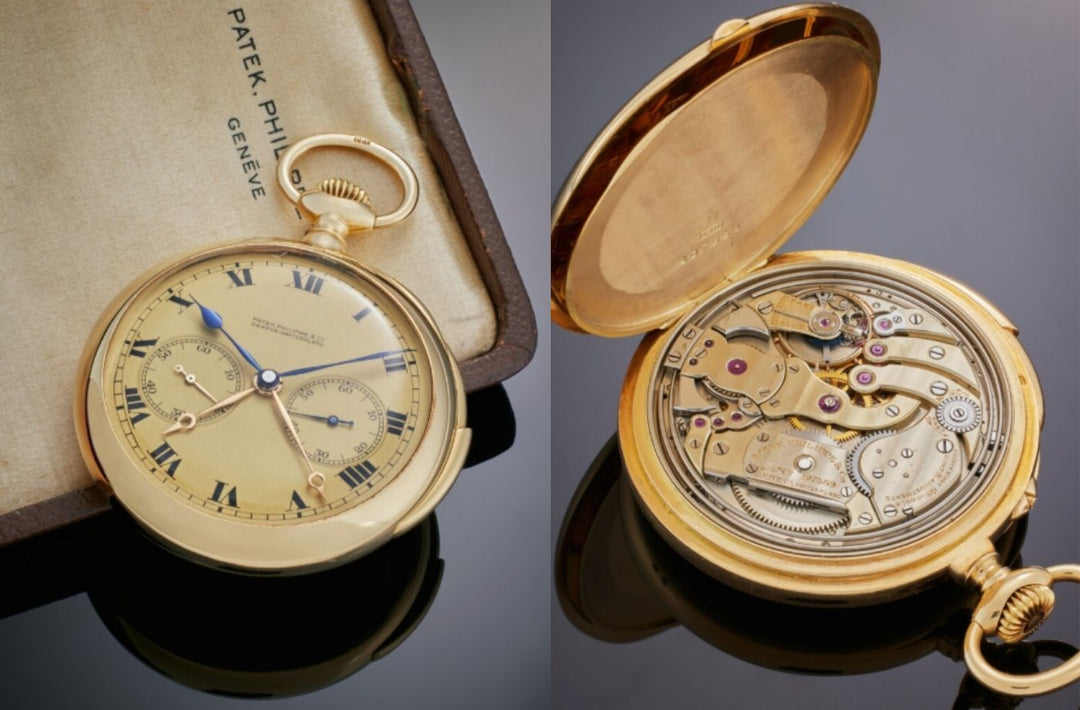What Is a Chronograph Watch?
At its core, a chronograph watch is a timepiece equipped with a stopwatch function. While it tells the time like any standard wristwatch, a chronograph also allows the wearer to measure elapsed intervals - seconds, minutes, and often hours - with the press of a button. This additional functionality, known as a complication in horological terms, gives the chronograph its distinctive character and technical appeal.
The word “chronograph” originates from the Greek words chronos (time) and grapho (to write), a reference to early mechanical devices that literally recorded time by marking it on paper. While modern chronographs no longer use ink or paper, the name has endured to describe any timekeeping instrument that can measure and record discrete durations.
The chronograph should not be confused with a chronometer. Though the two terms sound similar, they refer to entirely different concepts. A chronograph describes a function - the ability to measure time intervals - whereas a chronometer is a designation awarded to watches that meet stringent standards of accuracy, typically certified by institutions such as the COSC in Switzerland.
Visually, a chronograph is easy to recognise. Most models feature two or three pushers on the side of the case, along with sub-dials or registers on the main dial. These sub-dials are used to display the elapsed seconds, minutes, and sometimes hours recorded by the stopwatch mechanism. Unlike a regular three-hand watch, which shows only the time of day, a chronograph adds layers of utility and complexity to its design.
Whether mechanical or quartz, manual-wind or automatic, the chronograph remains one of the most iconic and enduring watch complications - one that continues to combine technical ingenuity with a bold and purposeful aesthetic.
A Brief History of the Chronograph
The story of the chronograph begins in the early 19th century with French watchmaker Louis Moinet, who created what is widely regarded as the first chronograph in 1816. Although his invention was intended for astronomical purposes, it could measure time to a precision of one sixtieth of a second - an extraordinary technical feat for the period. Moinet’s creation was never commercialised, but it laid the foundation for what would become one of horology’s most significant complications.
A few years later, in 1821, Nicolas Mathieu Rieussec developed a similar time-recording instrument at the request of King Louis XVIII, who wanted a way to time horse races. This version used a small ink marker to record the duration of each race on a dial, giving rise to the name "chronograph" - literally, time writer.
Throughout the late 19th and early 20th centuries, chronographs evolved to serve increasingly practical purposes. In aviation, pilots used them to perform crucial in-flight calculations. During wartime, chronographs played a key role in coordinating military operations and artillery fire. Their reliability and precision made them essential tools in high-stakes environments where timing was everything.
By the mid-20th century, chronographs had become indispensable in motorsport. Drivers and pit crews relied on them to measure lap times and calculate average speeds, often using tachymeter scales on the bezel. Watch brands recognised the growing demand and responded with purpose-built designs.
Breitling, for example, revolutionised the category in 1934 by introducing the two-pusher chronograph, a format that remains standard today. Heuer, later known as TAG Heuer, became synonymous with racing chronographs through models like the Carrera and Monaco. Omega also made history by supplying the Speedmaster to NASA, a chronograph famously worn on the Moon during the Apollo 11 mission in 1969.
Today, the chronograph continues to represent a blend of technical mastery and timeless design. It is more than just a functional tool - it is a symbol of mechanical sophistication and heritage. From the racetrack to the cockpit, from space exploration to everyday elegance, the chronograph remains one of the most admired and collected watch complications in the world.
How Does a Chronograph Work?
Despite its elegant appearance, the chronograph is one of the more mechanically complex watch functions. At its core, a chronograph combines traditional timekeeping with an independent stopwatch mechanism that can be started, stopped and reset on demand.
Most chronographs, whether mechanical or quartz, operate via a set of pushers on the side of the case. Typically, the top pusher - located at the two o'clock position - starts and stops the chronograph function. The bottom pusher - at four o'clock - resets the counters back to zero. These buttons control a separate gear train from the main timekeeping mechanism, allowing the chronograph to run independently without affecting the watch's regular operation.
Mechanical chronographs rely on intricate systems of cams, levers and wheels to engage and disengage the timing function. This traditional approach offers a tactile, almost analogue feel, highly prized by collectors. In contrast, quartz chronographs use battery-powered electronic circuits to manage the stopwatch feature. These are typically more affordable and require less maintenance, though they lack the craftsmanship and mechanical artistry of their manual or automatic counterparts.
The dial of a chronograph is usually distinguished by one or more subdials - smaller counters that display the elapsed seconds, minutes and, in some cases, hours. For example, one subdial may count 30 or 60 minutes, another may track up to 12 hours, and a central seconds hand often sweeps or ticks to indicate the passage of time while the chronograph is active.
In addition to standard chronographs, there are a few specialised variants:
-
Flyback chronograph: This allows the wearer to reset and immediately restart the chronograph with a single push, rather than stopping and resetting in separate steps. Originally developed for pilots, this function enables rapid timing of consecutive events.
-
Split-seconds chronograph (rattrapante): This complication features two central seconds hands stacked atop one another. When activated, one hand can be stopped to record a lap time while the other continues to run. Pressing the pusher again causes the first hand to catch up, or “rattraper”, with the second.
-
Monopusher chronograph: As the name suggests, this type uses only one button to control all three functions - start, stop and reset - in sequence. It is less common and often found in vintage or high-end models due to its mechanical complexity.
Understanding how a chronograph works enhances appreciation for its engineering and design. Whether powered by gears or circuits, it remains one of the most practical and visually engaging complications in watchmaking.
Chronograph Watches in Everyday Life
A chronograph is not just for the cockpit or racetrack. Its stopwatch function has countless applications in daily life, making it one of the most versatile complications available.
Everyday Uses of a Chronograph
Whether you lead an active lifestyle or simply appreciate precision, the chronograph offers real-world value in a variety of settings:
-
Sport and fitness: Time your runs, workouts or cycling intervals with ease, down to the second.
-
Cooking: Keep track of simmering sauces or espresso extraction times without leaving the kitchen.
-
Healthcare: Doctors and nurses can measure pulse rates and respiration timing using the chronograph's precise intervals.
-
Commuting and travel: Monitor elapsed time on a train journey or during a transfer, especially helpful when travelling across time zones.
-
Work tasks: Time presentations, breaks or focused work sprints using a mechanical tool instead of a phone timer.
The stopwatch may not be essential in every situation, but it proves surprisingly handy once you get used to having it on your wrist.
Aesthetic Value and Style Versatility
The practical appeal of a chronograph is matched by its visual strength. With its layered dial, prominent pushers and often a tachymeter scale around the bezel, the chronograph delivers a bold, technical appearance. It has the look of a precision instrument - and that in itself carries weight for many enthusiasts.
Chronographs also transition well across dress codes. A polished steel chronograph with a clean dial can sit comfortably under a shirt cuff at the office, while a more rugged model with a matte case and rubber strap suits a relaxed weekend look.
From tailored suits to denim and trainers, the chronograph offers a unique blend of functionality and flair that few other watch types can match.
Chronograph Movement Types Explained
At the heart of every chronograph lies its movement - the internal mechanism that powers both timekeeping and stopwatch functions. Broadly speaking, chronograph watches fall into two categories: quartz and automatic (mechanical) movements. While they perform the same core function, the way they do it, and what that means for the wearer, differs considerably.
Quartz vs Automatic Chronographs
|
Feature |
Quartz Chronograph |
Automatic (Mechanical) Chronograph |
|
Power Source |
Battery powered |
Self-winding rotor or manual winding |
|
Accuracy |
Highly accurate (±15 seconds per month) |
Less precise (±10 to 30 seconds per day) |
|
Maintenance |
Low – battery replacement every 2–3 years |
Higher – requires regular servicing |
|
Price Point |
Generally more affordable |
Typically more expensive |
|
Feel and Craftsmanship |
Functional and accessible |
Rich in horological value and complexity |
|
Sweep of Seconds Hand |
Often ticks once per second |
Smooth, continuous sweep |
Which One Is Right for You?
The choice between quartz and automatic chronographs often comes down to priorities.
If you value convenience, reliability, and affordability, a quartz chronograph is a sound choice. It requires minimal upkeep, offers excellent precision, and is available in a wide range of styles and prices.
For enthusiasts who appreciate mechanical engineering, traditional watchmaking, and the intangible charm of a hand-assembled calibre, an automatic chronograph holds greater appeal. These timepieces are often more expensive and require periodic maintenance, but they offer a deeper emotional and aesthetic connection.
Ultimately, both types serve the same function, but they do so with different personalities - one pragmatic, the other poetic.
Chronograph vs Chronometer: Understanding the Difference
Despite sounding similar, the terms chronograph and chronometer refer to entirely different aspects of watchmaking - one describes a complication, the other a certification.
A chronograph is a type of watch that features a built-in stopwatch function. It allows the wearer to measure elapsed time using pushers and subdials, typically in addition to the standard timekeeping display. It is a mechanical function, or complication, integrated into the movement.
A chronometer, by contrast, is not a function but a designation of precision. Specifically, it refers to a watch that has passed rigorous accuracy testing under various conditions. In Switzerland, this testing is conducted by the Contrôle Officiel Suisse des Chronomètres (COSC) - the Official Swiss Chronometer Testing Institute.
To receive COSC certification, a movement must meet strict performance criteria over a 15-day testing period, during which it is measured in multiple positions and at different temperatures. The required average daily rate must remain within -4 to +6 seconds per day. Only movements that achieve this high level of timekeeping accuracy are awarded the title of "chronometer."
In simple terms:
-
Chronograph: a stopwatch function built into the watch.
-
Chronometer: a watch certified for exceptional accuracy.
It is possible for a watch to be both - a chronograph with a COSC-certified movement. However, not all chronographs are chronometers, and not all chronometers are chronographs. Understanding this distinction is important for anyone considering technical specifications or looking to invest in high-performance timepieces.
How to Use a Chronograph Watch Correctly
Although a chronograph may appear complex at first glance, using one is straightforward once you understand the basics. Most modern chronographs operate using two pushers located on either side of the crown, and the process typically follows three steps.
Step-by-Step: Operating a Chronograph:
-
Start the chronograph: Press the top pusher (usually positioned at two o'clock) to start the central seconds hand. This hand will begin to sweep or tick, measuring elapsed time.
-
Stop the chronograph: Press the top pusher again to stop timing. The chronograph seconds hand and subdials will retain the measured time.
-
Reset the chronograph: Press the bottom pusher (usually at four o'clock) to return all counters to zero. This prepares the watch for the next measurement.
Using the Subdials
Chronograph watches often display different time intervals on subdials:
-
Seconds: Tracked by the central chronograph hand or a small subdial.
-
Minutes: Usually counted on a subdial at three or nine o'clock.
-
Hours: Displayed on a third subdial, if present, typically for measurements up to 12 hours.
What to Avoid
While most chronographs are robust and well engineered, certain actions can cause damage or premature wear:
-
Do not operate the pushers underwater unless your chronograph is specifically designed for diving and rated for underwater pusher use.
-
Do not reset the chronograph while it is still running unless the watch features a flyback function. Doing so may damage the movement.
-
Do not leave the chronograph running constantly for cosmetic reasons. Although not inherently harmful, it can reduce the watch’s power reserve and increase mechanical wear.
Care and Maintenance Tips
To ensure your chronograph remains accurate and reliable:
-
Avoid sudden impacts or heavy vibrations that may misalign the hands or affect precision.
-
Clean the case and pushers gently with a soft cloth to remove dirt and oils.
-
Have mechanical chronographs serviced regularly (typically every 4 to 6 years) to maintain lubrication and accuracy.
-
Replace the battery on quartz chronographs as recommended, usually every 2 to 3 years, to prevent battery leakage.
By following these steps and precautions, you can enjoy your chronograph watch as both a practical tool and a finely tuned mechanical device for years to come.
Should You Buy a Chronograph Watch?
The chronograph is not just for pilots or racing drivers. Its blend of functionality, heritage and visual appeal makes it suitable for a wide range of wearers - from seasoned collectors to those seeking a first serious timepiece.
Who Is a Chronograph Watch For?
A chronograph is ideal for anyone who appreciates precision, utility and mechanical sophistication. Whether you plan to use the timing function regularly or simply enjoy the technical look of the subdials and pushers, a chronograph adds character to your wrist. It suits:
-
Professionals who value functionality with understated style
-
Watch enthusiasts drawn to mechanical complexity
-
Collectors looking to diversify their line-up
-
Everyday wearers who enjoy the sportier, instrument-inspired aesthetic
Choosing the Right Chronograph
There are several factors worth considering when selecting a chronograph:
-
Case size: Chronographs are often larger due to the added movement components and dial complexity. Ensure the case fits your wrist comfortably without feeling oversized.
-
Style: Options range from vintage-inspired dress chronographs to robust tool watches. Consider when and how you will wear it - daily, occasionally, or for specific activities.
-
Movement: Decide between quartz for convenience and affordability, or automatic for craftsmanship and mechanical interest. Each has its own merits, as discussed earlier in the article.
A well-chosen chronograph is both a versatile timekeeper and a statement piece.
Storing and Caring for Your Chronograph
Whether you own a single automatic chronograph or a growing collection, proper storage is key to maintaining performance and longevity. At Barrington Watch Winders, we recommend keeping your automatic chronographs in a watch winder when not in use. This ensures that the movement remains wound and lubricated, particularly if the watch features complications like date or moonphase in addition to the chronograph.
Our single and multi-watch winders are designed to combine gentle motor function with elegant presentation, making them a practical and stylish solution for protecting your timepieces.
Storing your chronograph correctly helps avoid unnecessary resets, maintains timekeeping precision and reduces the chance of wear on the movement. It is a simple step that pays dividends over the life of your watch.
Explore Barrington Watch Winders for Your Chronograph Watch
When it comes to caring for your automatic chronograph, proper storage is just as important as regular servicing. A quality watch winder helps maintain the movement's rhythm, preserves timekeeping accuracy and ensures your watch is ready to wear at any moment. At Barrington Watch Winders, we offer a curated selection of precision-engineered winders designed to meet the needs of both seasoned collectors and everyday enthusiasts.
Barrington Single Winder - Shadow Black
(The Barrington Single Winder – Shadow Black offers a refined solution for storing and maintaining automatic timepieces, including complex chronographs. Housed in a compact 11.5 cm design, this winder combines sleek aesthetics with functional versatility. It features a precision-engineered Japanese motor that ensures ultra-quiet performance, making it perfectly suited for bedroom or office placement. With adjustable rotation direction (clockwise, counter-clockwise, or alternating) and a wide range of Turns Per Day settings - from 650 to 1,950 - it accommodates the unique winding requirements of virtually any automatic watch. Whether you own a lightweight vintage piece or a modern chronograph with a heavier movement, this winder delivers tailored support.
Designed with practical flexibility in mind, the Shadow Black model can operate via mains power or AA batteries, and includes Barrington’s 'Jump' feature that allows multiple units to be connected to a single power source. The included international adapter supports UK, EU and US plugs, while the two cushion options (Standard and Flex) ensure a secure fit for a range of wrist sizes. A soft LED light indicates active rotation without disturbing your surroundings. More than just a storage accessory, this winder preserves your watch’s performance and extends its service life - all while showcasing your timepiece in timeless, understated style).
Barrington Special Edition Single Winder - Santos Rosewood
(The Barrington Special Edition Single Winder – Santos Rosewood offers a refined blend of functionality and elegance. Its rich wood finish adds a touch of classic luxury, while the ultra-quiet Japanese motor and customisable rotation settings make it ideal for keeping any automatic watch, including chronographs, perfectly wound.
Compact and versatile, it operates via mains or AA batteries and features Barrington’s 'Jump' system for connecting multiple winders. With precise TPD control and cushion options for various wrist sizes, this winder delivers reliable care and stylish presentation in one understated package).
4 Watch Winder
(The Barrington 4 Watch Winder is a premium solution for collectors who want to keep multiple automatic watches wound, secure and elegantly presented. Each of the four rotors is individually programmable, allowing you to set rotation direction and Turns Per Day to suit the specific needs of each timepiece. With ultra-quiet Japanese motors, a digital control panel, and a fingerprint sensor for secure access, this winder balances advanced functionality with modern convenience.
Housed in a gloss-finish case with a carbon-effect interior, it also features a built-in drawer for storing quartz watches or accessories. The touch screen and remote control make operation effortless, while soft LED lighting and precise motor control ensure your watches stay protected and ready to wear. Ideal for larger collections, it is as much a display piece as it is a functional necessity).
Whether you own a single chronograph or an expanding collection, a Barrington watch winder offers the perfect combination of protection, presentation and performance. Quiet, stylish and versatile, our winders are built to support your horological investments with the care and attention they deserve.
Conclusion: Timeless Appeal of the Chronograph
The chronograph remains one of the most enduring and admired watch complications - not only for its practical stopwatch function but for the rich history and mechanical depth it represents. It brings together elegance, engineering and everyday usability in a way few other watch types can match. Whether timing laps, measuring moments or simply appreciating its intricate design, the chronograph continues to captivate collectors and casual wearers alike.
At Barrington Watch Winders, we understand that a chronograph is more than just a timepiece. It is a statement of precision and personal style. That is why we offer precision-engineered watch winders to keep your automatic chronographs perfectly wound, protected and ready to wear. Our winders combine silent operation with elegant presentation, ensuring your timepiece remains in peak condition - even when it is not on your wrist. After all, when you invest in a chronograph, it deserves a home that reflects its timeless value.
Frequently Asked Questions About Chronograph Watches
What is the main purpose of a chronograph watch?
A chronograph watch combines standard timekeeping with a stopwatch function. It allows you to measure elapsed time independently from the main display, using dedicated pushers and subdials. While originally designed for professional use in aviation, racing and science, chronographs are now appreciated for their practicality and technical appeal in everyday life.
How do I know if a watch is a chronograph?
You can usually identify a chronograph by the presence of two or three pushers on the case and subdials on the watch face. These subdials are used to display the recorded seconds, minutes and sometimes hours of the stopwatch function. Unlike standard three-hand watches, a chronograph adds visible complexity and functional detail to the dial.
What is the difference between a chronograph and a chronometer?
A chronograph is a type of complication that allows you to measure short intervals of time, while a chronometer is a certification of accuracy. Chronometers are tested under strict conditions and must meet precision standards set by institutions such as COSC. It is possible for a watch to be both - a certified chronometer with a chronograph function - but the two terms refer to entirely different qualities.
Can I use a chronograph watch every day?
Yes, a chronograph is well suited to daily use and offers both style and utility. You can use it to time cooking, workouts or work intervals, or simply enjoy the added sophistication it brings to your wrist. Just be sure to follow care recommendations and avoid operating the pushers underwater unless your watch is rated for that purpose.
How should I store my automatic chronograph when I am not wearing it?
If your chronograph has an automatic movement, it is best stored in a watch winder. A quality winder, such as those offered by Barrington Watch Winders, keeps the mainspring wound and helps maintain the watch’s timekeeping and lubrication. It also protects the watch from dust and provides an elegant display option, making it a practical and stylish storage solution.


